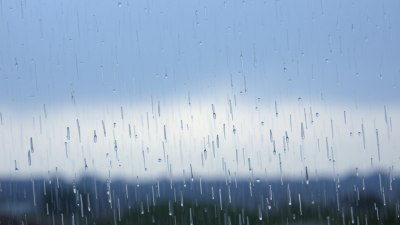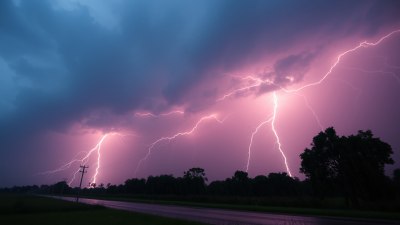How to Navigate the Changing Wind Patterns in This Season
Learn to adapt and thrive with changing wind patterns this season. Discover practical tips and insights.

The changing of the seasons often brings new challenges, particularly in understanding and navigating the shifting wind patterns that accompany them. With climate change influencing weather systems, familiar patterns might not hold true. As a result, adapting to these changes is vital for various activities like sailing, hiking, and even gardening. In this article, we'll explore ways to understand wind patterns, their significant shifts in different seasons, and how to navigate these changes effectively.
Understanding Wind Patterns
Wind patterns are primarily driven by the uneven heating of the Earth’s surface. Variations in temperature and pressure create movements in the air, resulting in winds that can be predictable or erratic. As seasons change, so do these patterns, influenced by geographical features and the Earth’s tilt. Knowing the fundamental concepts of wind formation is crucial for anticipating shifts in the atmosphere. One key factor is the Coriolis effect, which causes winds to be deflected in different directions depending on the hemisphere.
Seasonal Wind Changes
During spring, for instance, wind patterns often become more dynamic. As warmer air begins to rise, cooler air rushes in to replace it, leading to breezy conditions that can vary significantly from day to day. Summer tends to produce stable high-pressure systems, which generally result in calmer winds. Conversely, autumn often brings the return of turbulent weather as temperatures drop. In winter, winds can be fierce, especially in areas affected by cold fronts. These seasonal dynamics are critical for planning outdoor activities.
Adapting to Wind Changes in Sailboating
Sailors are particularly sensitive to wind patterns and must be adept at reading changing conditions. When preparing for a sail, it’s essential to check weather reports and understand local wind patterns. Tools such as barometers and wind meters can provide valuable information. Additionally, studying local sailing guides can offer insights into seasonal wind variances in specific areas. It is wise to plan trips during seasons when winds are known to be favorable for sailing, often late spring and early fall.
Hiking and Wind Awareness
For hikers, changing wind patterns can affect temperature and weather conditions significantly. High winds can lead to wind chill, making temperatures feel much colder. Understanding local forecasts and historical wind patterns can guide hikers to choose the right time for outings. If winds are expected to pick up, it’s wise to dress in layers and have a plan in case the weather turns. The size of the area you are hiking in can also influence wind patterns. Open terrains often experience stronger winds compared to densely wooded areas.
Gardening with Wind Changes in Mind
Gardening enthusiasts should also pay attention to wind patterns since they can affect plant growth and health. Strong winds can damage delicate plants, especially when they are in their early stages of growth. Implementing windbreaks using fences, hedges, or strategically placed larger plants can help protect your garden. Additionally, understanding the prevailing wind directions in your area will help in positioning your plants effectively, maximizing sun exposure while minimizing the stress caused by gusty winds.
Technological Tools for Monitoring Changes
As technology evolves, so do our resources for tracking wind patterns. Websites and applications dedicated to weather forecasting can provide real-time updates and alerts about wind conditions. These tools often include interactive maps showing wind speed and direction, making it easier to plan outdoor activities. For maritime navigators, systems like AIS (Automatic Identification System) can also give insight into prevailing weather patterns. Understanding how to use these resources can empower individuals to make informed decisions and navigate changing conditions safely.
Long-term Impacts of Climate Change
The continuous shift in global climate patterns has significant implications for wind behavior. Research shows that climate change is leading to more extreme weather conditions, including stronger winds and more unpredictable patterns. These changes highlight the importance of ongoing education and adaptation strategies. Understanding the larger environmental framework can help in anticipating shifts in wind patterns and how they might affect various activities and ecosystems. Engaging in community discussions about these changes can also bring awareness, urging local plans and adaptations to mitigate adverse effects.
Building Community Awareness
Connecting with local communities about the effects of changing wind patterns can be beneficial. Local environmental groups often offer workshops or seminars that focus on weather patterns and their implications. Engaging in these initiatives helps individuals learn more about navigating their environment effectively. Additionally, knowledge-sharing platforms can enable sharing experiences and strategies in adapting to seasonal changes. By fostering a sense of community awareness, we can collectively enhance our resilience against shifting wind patterns.
Navigating the changing wind patterns of the seasons requires foreknowledge and adaptability. Whether you're sailing, hiking, or gardening, understanding the fundamental changes in wind dynamics can significantly improve safety and enjoyment of outdoor activities. As our climate alters, staying informed about these changes becomes increasingly important. By using technological tools, community support, and a proactive mindset, individuals can effectively navigate the winds of change with confidence.











